Crush Your Sales Goals with Lead Qualification: A Comprehensive Guide
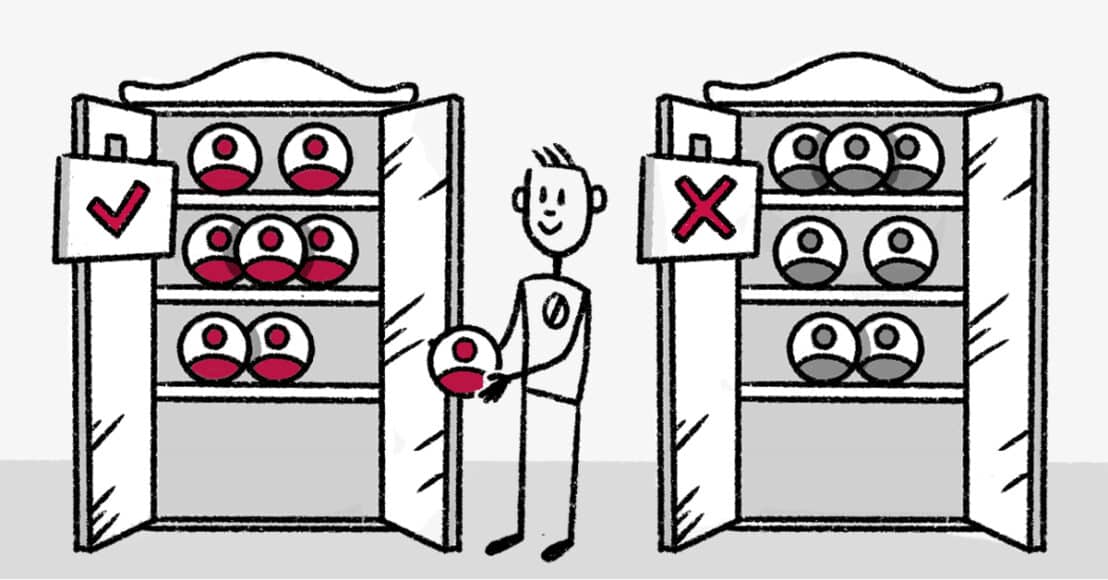
According to a Hubspot report, sales and marketing teams have the following top 3 priorities for the year:
- Closing more deals (75%)
- Improving the efficiency of the sales funnel (48%)
- Reducing the length of the sales cycle (32%)
This was followed by social selling (28%) and other factors like training the sales team (27%), improving existing sales technologies (23%), and investing in sales enablement (16%).
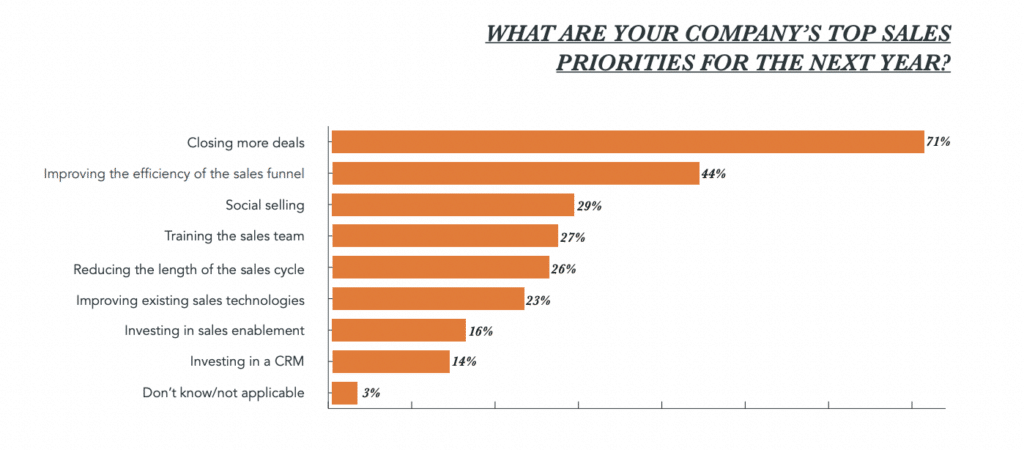
To align sales and marketing, the first step to achieving the above goals is a robust lead scoring and lead qualification framework.
For a prospect to get on a discovery call with your sales representative, you must ensure that the stars are aligned.
For a SaaS business, this means enabling the prospect and the sales team with as much arsenal to ensure that it is a mutually beneficial call and ultimately leads to a purchase.
You want to ensure that your sales team can prioritize the most valuable opportunities and increase the chances of closing deals and meeting quotas.
This is where you need a robust lead qualification process.
What is Lead Qualification?
Lead qualification is the process of determining the likelihood of a prospect becoming a paying customer based on hard data, historical trends, and established qualification criteria.
The ultimate goal of a great lead qualification process is to help sales teams focus their efforts on high-quality leads that are more likely to convert.
Why is lead qualification important?
Lead qualification is important because it is a crucial optimization technique for your sales funnel. It helps optimize your bottom line and saves your team time, energy, and bandwidth. Most importantly, lead qualification lets you understand a customer journey and inform your marketing and sales strategy accordingly.
By identifying your potential customer’s specific needs and pain points, sales teams can tailor their approach and messaging to meet those needs better.
With so many benefits, it seems intuitive to have a solid lead qualification process in place to help your business prioritize its efforts, align with its goals, and improve the customer experience.
This not only leads to more effective and efficient sales conversations and ultimately improves the overall customer experience. What’s not to love?

As per a 2021 Gartner Report, only 44% of all MQLs (marketing qualified leads) pass through sales as a good potential fit.

Different Types of Leads
In any organization, there are a couple of different types of leads:
Sales-qualified Lead
A Sales Qualified Lead (SQL) is a potential customer who has shown enough interest in a company’s products or services, provided the necessary information, and is ready to talk to your sales representative.
Ideally, an SQL has met certain criteria the sales and marketing team established, indicating they are more likely to become a paying customer.
Marketing Qualified Lead
A Marketing Qualified Lead (MQL) is a prospect who has engaged with your company’s marketing activities and demonstrated knowledge about the product or service, filled out a form, downloaded content, attended a webinar, etc.
The goal of identifying MQLs is to prioritize and pass along the most promising leads to the sales team for further follow-up.
By focusing on MQLs, marketing teams can ensure their efforts are targeted toward prospects likely to become paying customers.
MQLs are an important step in the lead generation and nurturing process.
Product Qualified Lead
A Product Qualified Lead is a prospect who has experienced direct value from using a product due to a free trial or using features for a limited time period.
Basically, a PQL has firsthand experience using your product and has derived substantial value from it. The use of the product takes this type of lead a step further from an MQL.
A PQL is gaining popularity across the board, but especially in SaaS.
The rise of the product-led growth approach and the “try-before-you-buy” model has led many companies to open the top-of-the-funnel floodgates by having customers sign up for either a free trial or a freemium plan.
The idea is to let your customers use your product on their own and arrive at an “aha moment” themselves, wherein they are convinced of the product’s offerings and can benefit from it.
It is important to note that not all free customers qualify as PQLs and that prospects must navigate different product features and take specific in-product actions to qualify as leads.
The different types of leads generated via several marketing and product-led activities are then fed into a qualification framework where either a set of qualifying questions are asked, or a lead scoring method is used to rate the prospect’s likelihood to make a purchase.
Owing to this process, leads are either qualified or disqualified.
The disqualified leads are fed back into a lead nurture sequence where they are engaged on suitable channels and warmed up to the product so that they can make a purchase down the line.
The qualified leads are the ones most likely to buy and are fed into the CRM for your sales team to go after!
Goals of Lead Qualification Process
A great lead qualification approach will help you determine:
- If the prospect stands to benefit from your product, i.e. Are they in the right industry, geography, and position to derive value from your product?
- If the prospect has a legitimate need for your product. There’s no point in selling to someone who DOES NOT need your product/service.
- If the prospect has the budget AND the authority to make the purchase decision. A great lead qualification approach will help you navigate the company hierarchy to reach users and buyers.
- If your prospect is evaluating or currently using a competitor. This will help you devise a strategy to tackle comparison questions when you finally get on a call with the prospect.
Let’s take a look at the crucial lead qualification aspects: approach, qualifying questions, and frameworks for you to adopt to build the perfect lead qualification strategy for your business.
Ideal Approach for Better Lead Qualification
Prospects will purchase not just if they have the time, need, or budget to explore and use your product. It is usually a combination of these factors and many others.
Lead qualification distills all these factors down to a science. Using a robust sales qualification, you can almost accurately score each lead based on many factors and their respective weightage; before they are passed on to sales.
Sales can then use the best technique catered to the specific prospect to increase further the chances of “closed won.” This technique is way more bankable than your usual “spray and pray” approach that most marketers and salespersons are still guilty of.

Before we talk about the exact lead qualification frameworks to use for your business, let’s look at an ideal process or approach:
Develop your ICP
Before you start with any lead qualification process or even spend on marketing, it is important to know your ideal customer profile. Developing an ICP isn’t as easy as it sounds.
Oftentimes, products are being built without an end user in mind. When this happens, it is tough to cater any marketing message or sales communication to any specific customer pain point. Being “something” for everybody is a recipe for disaster, especially if you are a new entrant in the market.
You can easily circumvent these issues by critically arriving at who your ICP is, i.e. which type of person and company would most benefit from using your product or service.
An ideal approach to defining your ICP is being clear on firmographics or technographic data like company size, funding status or IPO, revenue, industry, geography, and “position or job profile” within the company.
Understanding your ICP is critical as it will inform all your decisions, from communication to marketing activities to product strategy!
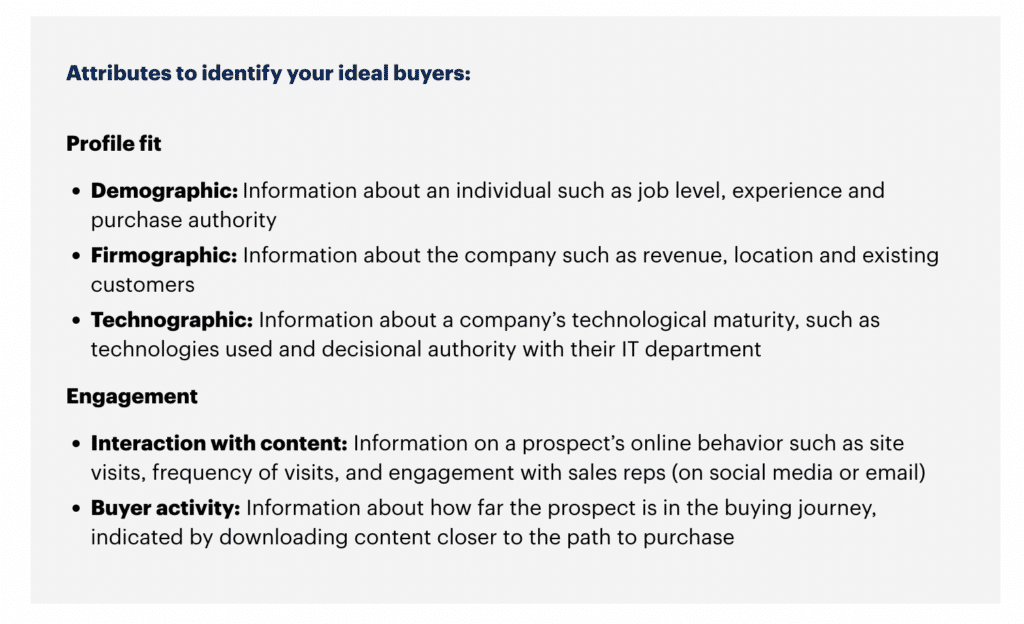
Know the difference between intent and interest
Interest does NOT equal intent. It is crucial for marketing and sales teams to understand this.
Interest can be defined as a prospect engaging in your marketing activity and taking a distinct action like downloading a white paper or attending a webinar.
That said, the intent is interest and the ability and willingness to buy your product.
It is important for your business to keep an eye out for markers that demonstrate a latent interest or if the interest is coupled with intent.
A sales qualification approach that does this well ensures that leads without intent don’t clog up your sales pipeline.
Better yet, your marketing team can further nurture the ones that have shown a lukewarm interest.
Qualifying questions can play a major role in assessing intent to answer key questions like:
- Is there a glaring problem? Do they acknowledge the problem? Is there an incumbent solution?
- How painful is the existing problem? Is there a chance they will do nothing (this quarter)?
Identify The Business Problem They’re Looking To Solve
A business without a need for your product is not going to purchase your product, no matter how interested they’ve been in your marketing activities.
For this reason, the most critical aspect of your lead qualification approach is understanding your prospects’ business pain points.
Businesses are resistant to change, and technological additions to their current structure as these are expensive and also present a significant learning and onboarding curve.
It’s important to determine the severity of the problem at your prospects’ end and whether or not it is burning enough for them to take action immediately.
If the business problem isn’t big enough, it’s usually not worth sales getting involved.
Determine The Budget Allocated For The Project
If the business problem is worth solving, chances are they’ve had an internal discussion and are actively looking for a solution in marketing.
In this case, determining your prospects’ budget would go a long way to understanding the efficacy of a deal.
If the budget allocated and the price of your product is in the same range, you could sweeten the deal tremendously.
This will also help you better negotiate with the client in case they are in talks with a competitor.
Disqualifying is Qualifying
When it comes to sales qualification, disqualifying is qualifying. Don’t be disheartened if many of your MQLs don’t qualify as SQLs – it just means you are doing your job right and making your sales pipeline that much more efficient.
A disqualified lead is a sales opportunity that has been deemed not fit enough to pursue. Having too many of these leads isn’t as bad as you might think.
As per a Gleasnter Research report, only 25 % of all marketing-qualified leads are good enough for a sales touch.
This means that you would benefit from actually disqualifying leads more stringently and, as a result, ensuring that your sales team’s bandwidth and energy are optimized.
Understand The Decision-Making Process
Probably the most underrated tip of all, but understanding the internal decision-making process at your prospects’ company will go a long way to help you get a foot in the door (land), and expand the number of seats within the company.
This land and expand motion best occurs by charting out the authority and buying process. It helps you understand bottlenecks, such as who or what is holding them back, and answers any fears and challenges they might have.
According to Harvard Business Review, the number of people involved in a B2B purchase decision has climbed up from 5.4 to 6.8.
This is in accordance with a report suggesting that a sale usually occurs between the 5th and 12th conversation.
A lot of this process, from the first sales, call to the final sale, can be better designed by understanding your prospects’ decision-making status quo.
By finding out the right people to talk to, your sales reps can cater their messaging to address their specific pain points and concern and make a better case for your company to be the right vendor.
Lead Scoring
Lead scoring is the process of assigning a numerical value to indicate how interested a prospect is in your product or service. You can assign points based on multiple attributes, such as visiting the pricing page or requesting a demo. A lead scoring model uses data to assess a prospect’s level of interest and their likelihood of converting to paying customer.
This process also provides valuable insights into what attributes or characteristics are common among successful leads, which can be used to optimize future lead generation efforts.
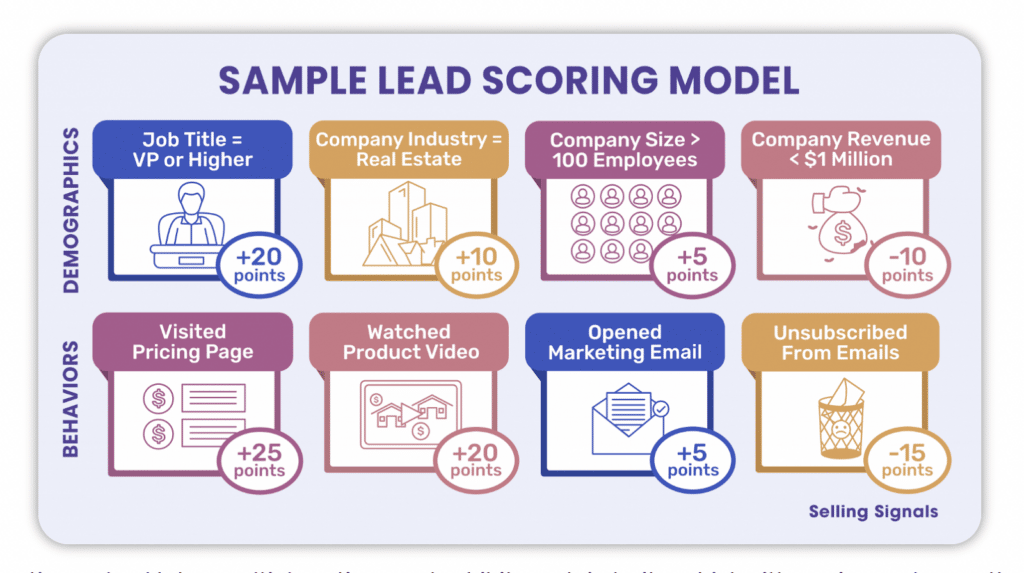
A good lead scoring model takes into consideration the following factors:
- Alignment
Your product, sales, and marketing teams should come up with scoring criteria based on in-product actions, website clicks, conversations with reps, and other factors.
If marketing and sales teams are not on the same page, you are at risk of losing out on great leads, and consequently spending time converting lukewarm leads. Constant communication between them will ensure that the lead scoring model is always updated to the current trends. - Explicit Scoring
Explicit scoring is when you assign points to a lead based on specific objective qualities such as job title, geography, seniority level, company size, company revenue.
These explicit scores help streamline any lead generations and lead nurture efforts. For example, a person in the C-suite has buying authority and gets an explicit score based on that, you can verify the rest of the details to assess where the lead stands on an interest level. - Implicit Scoring
Implicit scoring refers to points allotted to a prospect based on their behavior, such as website visits, social media interactions, email opens / clicks, contact form submissions or other actions like downloading a white paper or attending a webinar.
Implicit scoring offers additional insight beyond explicit scoring and paints a more nuanced picture of a prospect’s touchpoints with your marketing activities, and their consequent level of interest. - Negative Scoring
Negative scoring is a way of subtracting lead scores from the prospect based on actions that indicate a conflict of interest or a complete lack of interest.
These actions may include visiting your careers page, unsubscribing to your email list, being part of a competitor (which means they are probably just researching you!).
- Continuous Refinement
A good lead scoring model is constantly upgrading based on your product updates, marketing strategy and customer behavior. Therefore, “design and refine” should be the ideal approach for your lead scoring model.
Oftentimes, you may notice a shift in trends of interest from one prospect persona to another. To be on top of such changes, your lead scoring model needs to be constantly adjusted.
Investing in the design and updation of a good lead scoring model can be cumbersome and require significant time and bandwidth from your team. To automate the process, you can also buy rather than build.
A good lead scoring software such as Breadcrumbs – which acts like your “Scoring Model Manager” will help your RevOps team build, validate and test several lead scoring simulations for your desired outcomes.
Qualifying Questions
Qualifying questions are questions your sales and marketing team directly asks the prospect to determine their interest level and the likelihood of purchasing your product or service. These questions can be asked to gather information about prospects’ budgets, the urgency of the pain the business is trying to solve, and the decision-making process.
By asking the right qualifying questions, sales and marketing teams can tailor their efforts accordingly. To strengthen the process even further, each qualifying question can be part of the lead scoring model, and you can assign “points” according to the weightage and importance of the question.
Here are ten useful qualifying questions to include in your lead qualification process:
- What business problem are you looking to solve? What challenges prompted you to look for a solution right now?
This will evaluate if your offering fits the problem the prospect is trying to solve. Establishing mutual ground based on what pain point your prospect is trying to solve is always a good idea. If, through this question, you realize that your product cannot solve the problem or that there isn’t a real business bottleneck, to begin with, you would be saving your team considerable time pursuing a low-quality lead. - How did you handle the problem in the past? Why didn’t the previous solution work?
Evaluating your prospect’s history of solving this problem will offer great insights into their ideal offering and whether your product fits the bill.
- Do you have a budget to solve this problem? If not, how does the process of getting budget approvals to work?
Qualifying on budget is important, and it is better to do it sooner rather than later in the conversation. Most prospects hesitate to reveal a specific number to strengthen their negotiating power. It is good to get a ballpark range here. A better approach would be to have a drop-down menu and for them to choose one of 3 or more options as price ranges. - What are you currently spending on time and resources on solving this problem? (i.e. assessing the opportunity cost of solving in-house or with a competitor vs. buying your product/service)
This is an important question to ask as it helps you understand where you stand against the competition or any in-house capabilities your prospect may have built to solve this issue. - What other solutions are you evaluating?
This qualifying question helps you understand if your prospect is in talks with any of your competitors and at what stage. This will help you make a better case for yourself as a vendor and present a competitive offer. - Do you currently have a solution in place? If so, why are you evaluating changing this solution?
It’s important to know whether or not they’ve already tried a similar offering or are currently with a competitor. This question will help you understand if there are any other ways in which you can - When do you need a solution in place by?
This question helps you understand the urgency at your prospects’ end. For example, if the timeline is not near enough, your sales team would be better off prioritizing leads urgently needing a solution. This also gives them a fair time estimate within which to reinitiate contact with the prospect. - How does the decision process at your company work? Who are all the stakeholders that I need to get buy-in from?
Understanding the dynamics of the buying process at your prospects’ end will help you make a case for each stakeholder. It is a critical question for you to understand the ideal process at similar companies and create a scalable sales engine to capture demand and convert them into paying customers. - What are all the potential bottlenecks that could occur in the process of making this sale?
This question will help you understand what kind of challenges and concerns you will have to address during the entire sales and negotiation process. If you can prepare beforehand for most of these, it will ensure a smoother process for both you and the prospect. - What does success look like with respect to solving this problem? Both qualitatively and quantitatively.
Making a sale isn’t where the buck ends. A great sale is made when you have a happy customer that is retained month after month. This question helps you understand what a successful outcome for your prospect is. Based on this,
Qualifying questions are a great anchor to gather relevant information about your prospect, and be able to assess key parameters like budget, authority, need, timeframe, and any other challenges.
Based on these questions, you can then pass on the high-quality leads through one of the below frameworks.
How to Qualify a Lead with Lead Qualification Frameworks
BANT Qualification Framework
BANT is a qualification framework commonly used in B2B sales to assess the likelihood of a potential customer making a purchase.
BANT stands for Budget, Authority, Need, and Timeline.
These four elements are considered to be key indicators of a lead’s readiness to buy and are used to prioritize sales efforts and allocate resources effectively.
The BANT framework helps sales teams determine if a lead has the Budget to pay for a solution, the Authority to make a purchasing decision, a clear Need for the solution, and a defined Timeline for making a purchase. By evaluating leads using the BANT framework, sales teams can quickly identify which leads will likely close and focus their efforts accordingly.

BANT is one of the oldest lead qualification frameworks and has stood the test of time.
That said, it still falls short of gauging important parameters like readiness and ability to buy based on independent research.
Owing to the digital age, a lot of buyers have already done their research and may be less willing to disclose a lot of the data required under the BANT framework.
CHAMP Sales Framework
CHAMP is a sales qualification framework used to assess the potential of a lead to become a customer. CHAMP stands for Challenges, Authority, Money, and Prioritization.
The CHAMP framework is a tool that sales representatives use to determine the likelihood of a lead to closing and prioritizing their sales efforts.
The four elements of CHAMP help sales representatives understand the specific challenges faced by the potential customer, determine who has the authority to make a purchasing decision, establish if the customer has the budget or financial resources to make a purchase, and determine if the potential customer has made the purchase a priority.
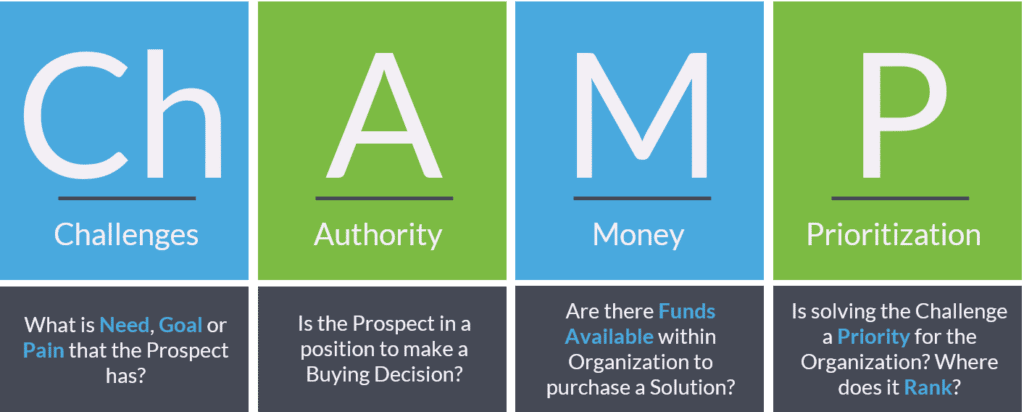
MEDDIC
MEDDIC is a sales qualification framework used in B2B sales to assess the likelihood of a potential customer making a purchase. MEDDIC stands for Metrics, Economic Buyer, Decision Criteria, Decision Process, Identify Pain, and Champion.
This framework provides a structured approach for sales representatives to understand the needs of a potential customer and determine their likelihood of making a purchase.
The six elements of the MEDDIC framework help sales representatives understand the customer’s goals and the metrics used to measure success, identify the economic buyer and their decision criteria, understand the decision-making process and stakeholders involved, identify the customer’s pain points and how they align with the solution being offered and identify a champion within the customer’s organization who can help drive the sale forward.

ANUM
ANUM stands for Authority, Need, Urgency and Money and is a spin-off from the BANT framework. The key difference here is that a sales representative should prioritize speaking with a decision-maker in this framework.
Need, Urgency and Money have also been reordered according to their priority within the ANUM framework.
FAINT
FAINT is a sales qualification framework advocated by The Rain Group. FAINT stands for:
- Fit: Does the solution fit the customer’s specific needs?
- Authority: Does the decision maker have the authority to make a purchase?
- Budget: Does the customer have the budget to make a purchase?
- Interest: Is the customer interested in the solution and actively engaged in the buying process?
- Need: Does the customer have a compelling need for the solution?
By evaluating leads against the five elements of the FAINT framework, sales teams can determine the likelihood of a lead to close and prioritize their efforts accordingly.
Sales representatives can use the FAINT framework to understand customers’ needs and decision-making process and to ensure that they are engaging with the right stakeholders and addressing the right painpoints. The FAINT framework can also provide valuable insights into what attributes are common among successful leads, which can be used to optimize future lead generation efforts.
Software to Help you Qualify Leads Better
It is 2023, which means there’s probably software that can replace human effort and create outcomes faster and with more precision.
Lead qualification is no different.
Here are a few we love:
Data Enrichment
Good data is a critical part of an efficient sales funnel. Within the Data enrichment space are a couple of tools you can explore: Clearbit and Apollo.
With Clearbit, businesses can enrich their customer data by adding missing information such as company size, location, industry, etc.
This information can then be used to create targeted and personalized outreach campaigns, improve lead scoring, and increase sales productivity.
It also easily integrates with your CRM, be it Salesforce, Marketo or Hubspot, or any communication platform you choose, e.g. Slack.

Apollo.io also provides a suite of tools for lead generation, lead scoring, account-based marketing, and sales intelligence, and can be useful in helping you gain insights on target accounts and information about key decision makers and the current tech stack.
Other products like DataRobot and Talend also serve a similar purpose. You can evaluate these tools and pick the right one for you.
Lead Scoring
There can be many moving parts when it comes to lead scoring. Oftentimes, it’s better to buy than build in-house lead-scoring capabilities.
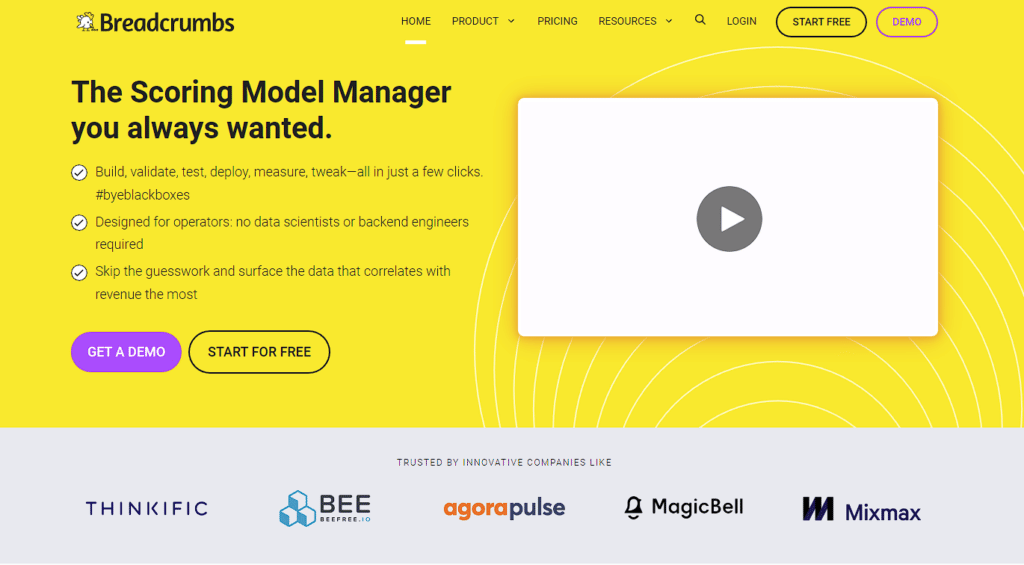
Breadcrumbs.io is a SaaS platform that provides website visitor tracking and lead generation tools for B2B companies. It allows businesses to see who is visiting their website, what pages they visit, and how long they spend on the site. This information can then be used to create targeted and personalized outreach campaigns to turn website visitors into leads and customers.
It also integrates with popular marketing and sales tools like Salesforce, Hubspot, and Mailchip to make it easier for business to manage their leads and customer data.
Product-led Sales Tools
Tools like Toplyne help you collect signals from product usage data and identify which of your PQLs fall under high-intent leads and which need to be nurtured further. It’s a great option to use such tools to make a product-led sales approach more efficient.
Conclusion
Lead qualification is an intense but crucial process in your sales optimization funnel.
While the process may vary from business to business, it is important to have a solid lead qualification approach in place that evolves with your product as well as the changing need of the customer.
Investing in lead qualification will reap multiple benefits both in the short-term as well as the long run. A robust lead qualification for your SaaS business will not just help you improve your bottom line but also help your sales enablement team, marketing team, and product team to make better decisions with customer insight at the forefront.


